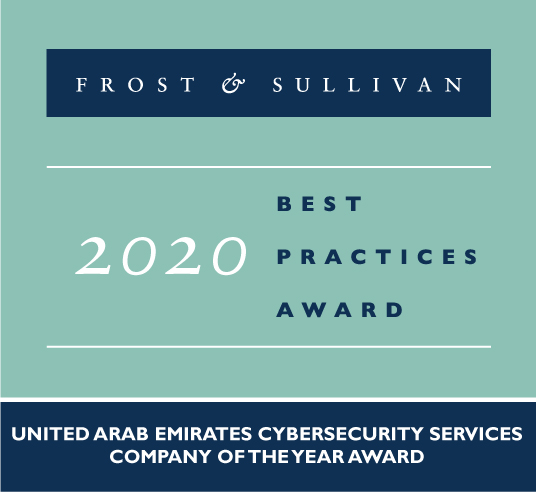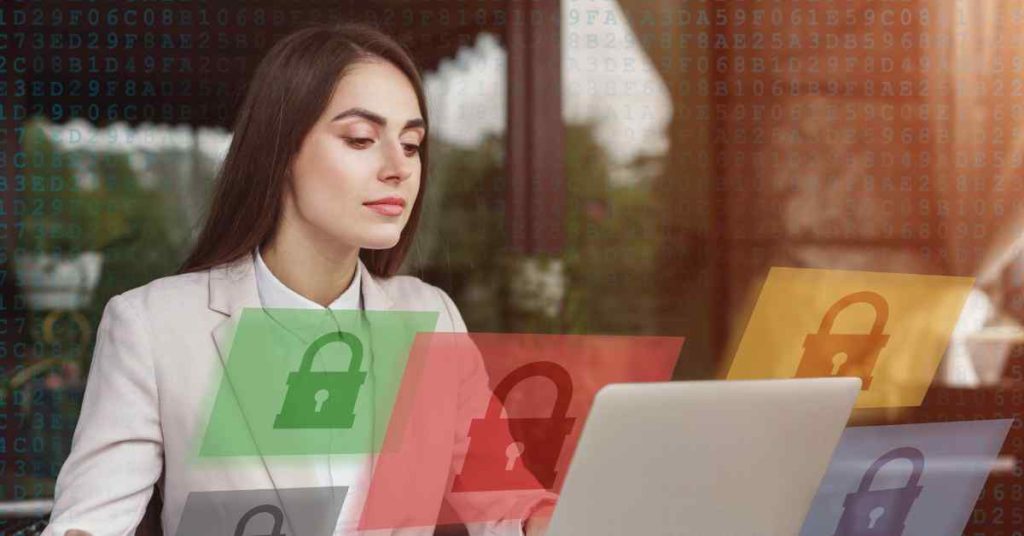30 Best Facts For Choosing A Cybersecurity Company in Dubai
30 Best Facts For Choosing A Cybersecurity Company in Dubai
Blog Article
Top 10 Tips For Assessing The Certifications And Compliance Of A Cybersecurity Service Firm In Dubai.
1. Verify the authenticity of certificationsBegin by confirming that the certifications issued by the company are legitimate. Contact certification authorities to verify that certifications are current and legitimate. Among the key certifications to consider are ISO 27001 PCI DSS and copyright. Valid certifications show adherence to cybersecurity standards.
2. Learn more about Local Regulatory Compliance
Be familiar with local laws and regulations governing cybersecurity in the UAE, such as the UAE Data Protection Law and the Dubai Cybersecurity Strategy. Assuring that your business adheres to the legal frameworks can be a cause of legal penalties or reputational damage.
3. Examine Industry-Specific Standards
Depending on the sector you work in, some standards will be more important. For instance, healthcare institutions might need to adhere with HIPAA and financial institutions might be focused on PCI DSS. The evaluation of industry-specific certifications assures that the company has the necessary expertise to handle sector-specific risks.
4. Request Documentation
Request detailed documentation to prove compliance with standards. This could include audit reports, security policies and risk management frameworks. A thorough document can provide insight into the company's commitment to compliance and the effectiveness of their security practices.
5. Request Information on Third-Party Auditors
Find out if the business is subject to regular audits from third parties. Audits conducted by independent auditors are a great method to obtain objective information about the compliance and security status of a business. Look for audit reports from credible organizations that verify the company's security practices.
6. Evaluate Continuous Improvement Initiatives
Cybersecurity is a rapidly evolving field that requires companies to demonstrate an ongoing commitment to improvement. Check if the business is constantly changing its policies, technology and regulations to meet changing threats and regulatory changes. This may mean updating their security framework and continuing training.
7. Review employee training programs
The employees who are trained will help to create a strong cybersecurity framework. Find out about the training programs the business offers for cybersecurity and compliance. Regular training sessions keep employees up-to-date with the most recent security threats and the latest requirements.
8. Review Incident Response Plans
Knowing how the company will respond to incidents is vital. A comprehensive plan for incident response should explain how the company deals with data breaches. Verify that the processes are in line with guidelines and regulations for compliance.
9. Seek Client Testimonials and References
Ask for references from current clients that can attest to the certifications and compliance of the firm. Testimonials will provide you with an understanding of the company's ability to manage cybersecurity risks as well as its reliability.
10. Research Industry Recognition
Look into the company's reputation within the cyber-security industry. Look for awards, recognitions or memberships with professional organizations that demonstrate the company's commitment to excellence and compliance in cybersecurity. A good reputation can be a sign of a company’s expertise and reliability. Have a look at the top Cybersecurity Company in UAE for site recommendations including computer security company, cyber security requirement, information technology security, ai cybersecurity, digital security, cybersecurity consulting services, cyber security strategies, inform security, cyber & network security, cyber security services company and more.
Top 10 Tips To Assess The Incident Response Capabilities In A Cybersecurity Services Company
1. Learn about Incident Response FrameworkBegin with an examination of the incident-response framework used by the company. A framework that is clearly defined, such as NIST Cybersecurity Framework (or the SANS Incident Response Process) is a sign that the company follows industry-standard practices to handle incidents. Make sure they follow a structured process for handling incidents.
2. Evaluate Incident Response Team Expertise
Examine the experience and qualifications of the team members. Look for certifications such as Certified Incident Handler (GCIH) or copyright Security Professional (copyright). Team members with a solid understanding in the discipline of incident management and mitigation are able to effectively manage and reduce the risk of incidents.
3. Review Past Incident Response Case Studies
You can request examples or case studies of past incidents managed by the company. Studying the way they handle actual situations will give you an insight into their effectiveness in speed, speed, and general approach to handling incidents. Get detailed explanations of the ways in which the company identified, contained, resolved, and handled incidents.
4. Find out if an Incident Responder is available 24/7. Availability
Find out if the company offers 24 hour emergency assistance for incidents. A cyber-attack can happen anytime. Having a team on call 24/7 can ensure that security threats are addressed promptly and will reduce the damage and recovery times.
5. Ask about Incident Detection Tools
Review the tools and technologies the company employs to monitor and detect incidents. The use of effective detection software, like an Security Information and Event Management system (SIEM) as well as an intrusion detection system (IDS), is essential in identifying security threats as swiftly and effectively as you can.
6. Examine Communication Protocols
Find out what the business's communication strategy is with its stakeholders in the course of an event. In order to coordinate responses, informing the stakeholders and making sure that all parties are aware of their obligations, clear and effective communications are crucial. How do they keep clients updated throughout the response?
7. Review Review Processes for Post-Incident Review
Ask the company about its post-incident assessment procedures. After an incident, thorough reviews are able to assist in identifying areas of improvement and lessons to be learned. You should look for companies who implement modifications based on these reviews to enhance their response capabilities.
8. Assess Recovery and Remediation Strategies
Understand the strategies the company employs to help recover and improve following an incident. Recovery plans should include steps taken to restore systems and data and ensure that vulnerabilities are addressed in order for future incidents to be avoided. Ask about their method of recovering and strengthening systems following an incident.
Examine Compliance with Regulatory Requirements
Check that your company’s capabilities for responding to incidents are in line with applicable regulatory requirements. Your company may be required to meet specific requirements in relation to the reporting of incidents. The compliance can be assured by a business that is aware of these rules.
10. Request references and testimonials.
In addition, you could ask for references from current customers who have used the service. Reviews from customers can offer valuable information about the effectiveness and reliability of the company's response in case of an incident. Read the top penetration testing company in uae for more advice including business and cybersecurity, security ot, info security, computer security company, info security, cyber security services, network security solutions, information and cyber security, security it company, information and security and more.
Top 10 Ways To Evaluate The Security Awareness Training Provided By An Organization That Provides Cybersecurity Services
1. Examine Training ContentStart with a review of the content in the security awareness program. Be sure the content of the training includes important topics such as social engineering and phishing. Also, make sure that data protection and compliance are included. In order to equip employees with the necessary skills to detect and respond effectively to potential threats, it is crucial to create a program that covers every essential topic.
2. The option to customize your options is offered
Ask if the training could be tailored to the specific requirements of your company and the culture of your company. Making the training tailored to meet specific challenges and situations that your employees face can increase the relevance and involvement, leading to better retention of information.
3. Examine Training Delivery Methods
Consider the delivery method of the training. The options include workshops in person as well as online courses, webinars, and interactive simulations. You can increase the effectiveness of learning by combining various types of formats.
4. Interactive Elements
Examine if your course contains interactive elements such as tests, scenarios, and simulations. Interactive training can boost retention and engagement in learning which makes it simpler for employees to use their skills in practical situations.
5. Check the frequency of updates
You should inquire about the frequency the training sessions are conducted and how frequently the content is updated. Regular training sessions, as well as changing the curriculum on a regular basis is vital to keep employees up-to-date on the latest threats and best methods.
6. Measure the effectiveness of your program
Find metrics like assessments of post-training and pre-training including feedback from participants and trends in incident reporting. Look for trends in feedback received after and prior to training assessment of participants, as well as incident report data. The evaluation of the program's effectiveness will allow you to determine its value and areas to improve.
7. Check for Certification and Compliant
Examine whether certification is offered following the completion of training. The certifications can boost the credibility of employees and prove that the employees have gained the necessary knowledge. Make sure you align the training to any pertinent regulatory compliance needs your organization is required to meet.
8. Look up testimonials and references.
Find feedback by contacting the companies that utilized the service. Testimonials can provide an insights into the efficacy of training and the way it was received by employees. Positive feedback is an indication of the company's credibility in providing effective awareness training.
9. After-Training Support: Evaluate it
Ask about the support that will be provided once the training is completed. Resources such as newsletters, refresher courses or access to an online knowledge base will reinforce training and help keep cybersecurity in the forefront of employees' minds.
10. Assessment Engagement and Culture-Building
Finally, consider the way in which the program has helped in creating a culture for security within your business. Choose initiatives that encourage continuous awareness. This could be through security-related newsletters and seminars. Security-focused cultures inspire employees to take responsibility for protecting their organization. Have a look at the recommended iconnect for website advice including computer security services, info security, secure the data, info security, security network security, cyber security consulting, security by design, cyber security platforms, it security logo, secure the data and more.